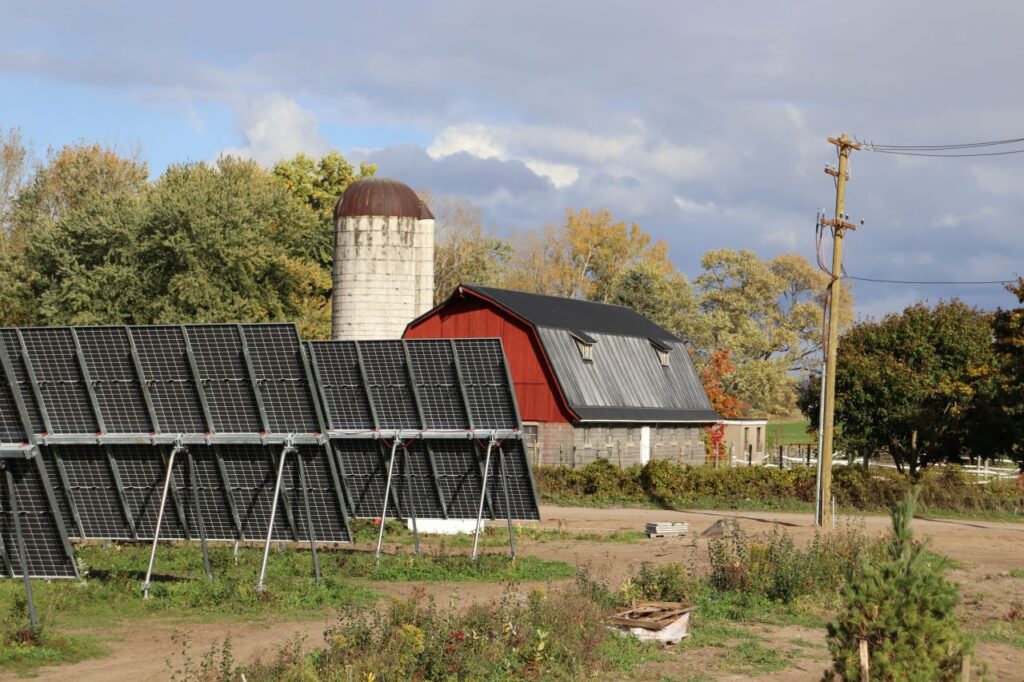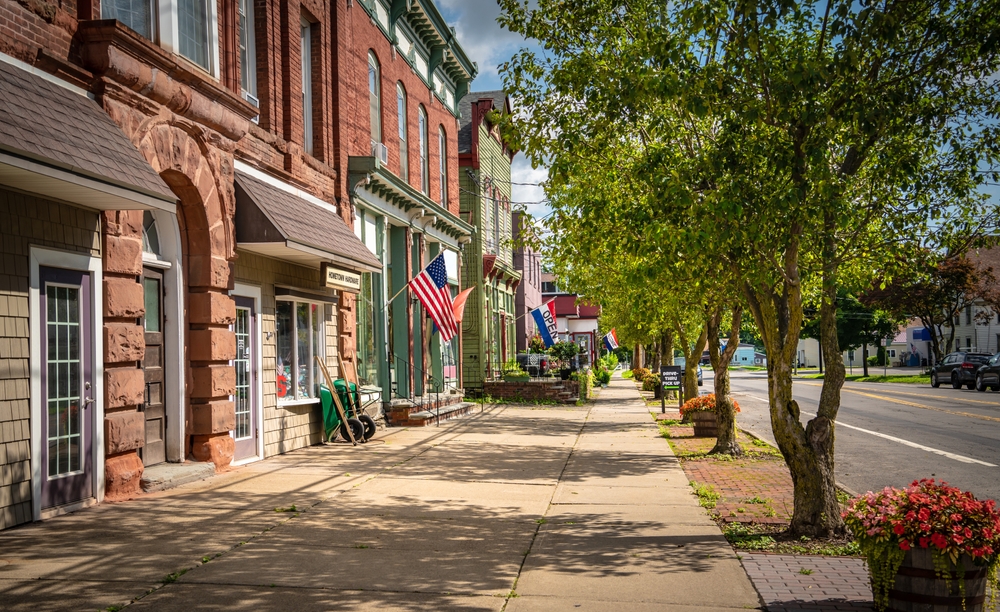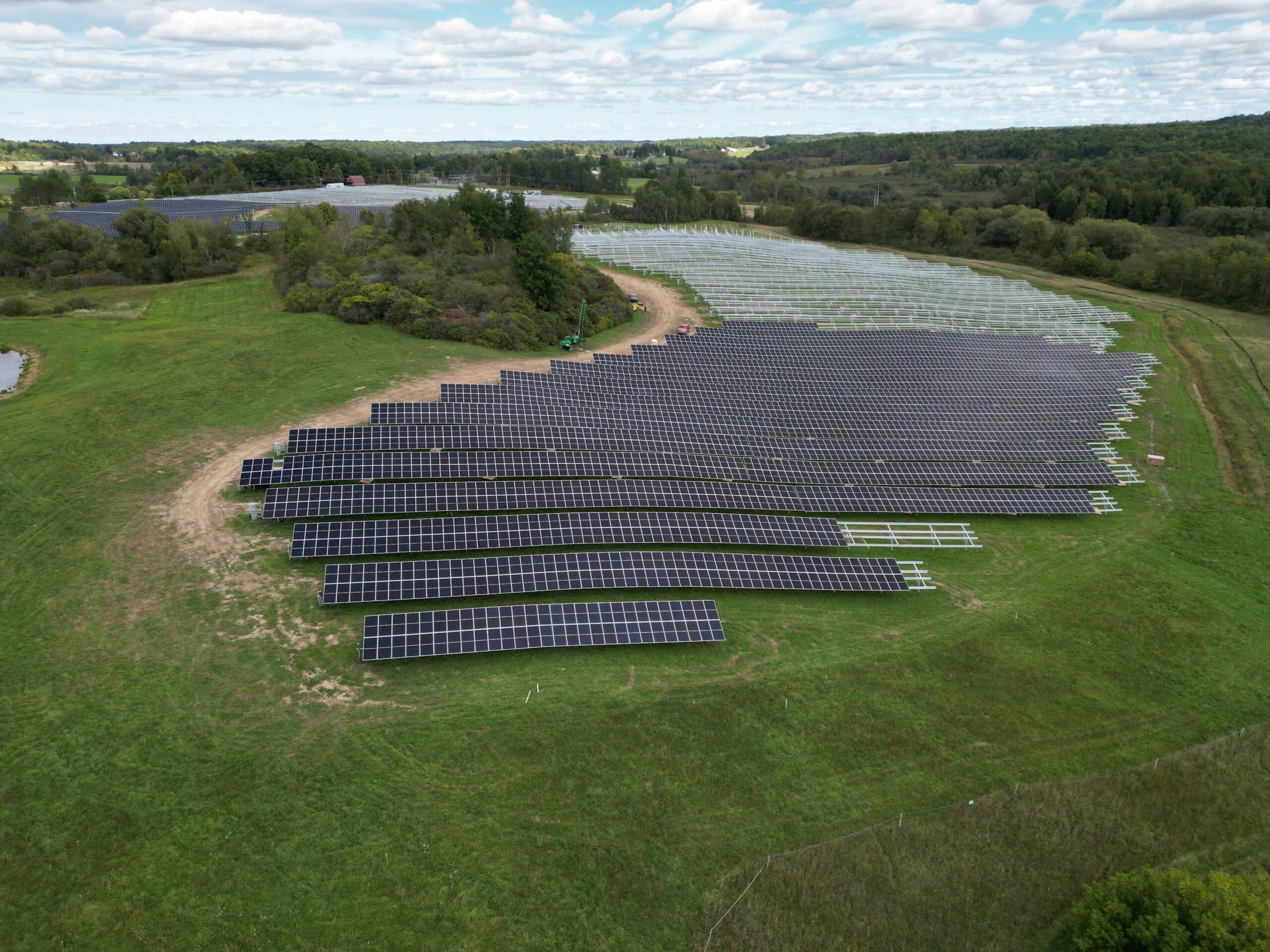Solar development sometimes faces an uphill battle in getting buy-in from municipalities.
Community members can distrust large-scale solar projects for many reasons. From concerns about rows of solar panels clogging picturesque views to fears about tanking property values, it’s a challenge.
But perhaps the biggest issue solar EPCs face when working with small communities is a lack of communication.
The Pitfalls of Poor Communication
Unfortunately, poor communication can be dangerous for everyone involved. When stakeholders have concerns, it breeds mistrust, delays, and even opposition leading to canceled projects.
On the flip side, sharing the right information at the right time can keep everyone aligned, making the process smoother. This means going beyond gathering rubber stamp approvals and actively participating in the community.
Every community is unique, requiring developers to understand and embrace them in different ways. Being proactive and intentional with how we communicate, listening to and addressing potential concerns, and building trust are crucial.
Why Communities Cast Shade on Solar
It’s not that people don’t like solar energy development; they just don’t want projects too close to them.
People call this fierce local community reaction to new projects NIMBY – Not in My Backyard. According to the Encyclopedia Britannica, NIMBY “connotes the unwillingness of individuals to accept the construction of large-scale projects by corporations or governmental entities nearby, which might affect their quality of life and the value of their property.”
We first started hearing the acronym in the late 1970s, but social scientists didn’t adopt its use until the early 1980s. Since then, NIMBY has become a rallying cry for community groups concerned about negative development near their homes.
But the truth is NIMBY concerns arise for many reasons.
Aesthetics
Renewable energy projects offer plenty of low-cost energy, but they aren’t exactly bastions of beauty. Although solar developers can’t change how panels and racking systems look, they can try hiding them.
Typically, this includes beautification efforts like creating region-specific landscapes and pollinator habitats. Though neither completely obscures the panels from view, they go a long way toward helping them blend in.
Location and Size
Community-scale solar sites are smaller than utility-sized installations but are still large.
The sheer size of these projects can overwhelm rural communities despite benefiting from the electricity produced. People may be afraid that the land won’t be usable for farming or grazing purposes.
Sites may also be visible from the roadside, affecting scenic rural views.
Tanking Property Values
Some homeowners living near solar farms believe their property values will slump.
However, a recent Virginia Tech report analyzing nearly 9 million home sales near solar sites discovered some interesting data. According to them, farm and vacant land within two miles of solar sites increased in value by 19%.
VT’s data is more complicated for residential properties. Homes within three miles of solar sites saw a 4.8% drop in value. However, losses were mitigated by larger lot sizes, more distance, and project age.
Land Use Worries
While many developers aim to build on unattractive, inexpensive land, sometimes the best locations are situated on agricultural land.
When farmland becomes the focal point for development, some people may see it as a waste or an attack on local farmers. They think farmers could be using the land for crops or animals and are missing out because of the solar panels.
Partisan Politics (Us vs. Them)
Politics can divide people, but they may also galvanize communities against outside threats.
The idea is that corporations and large-scale companies will come in and ruin the rural way of life. For some, it could mean destroying the landscape. For others, it may be the thought of rural communities bearing the brunt of a project so other communities and companies can benefit.
Worse yet, the project could draw the ire of folks who believe new solar jobs could be temporary. This may leave community members questioning the project’s value.
Good Ol’ Fashioned Misinformation
Mark Twain once said, “A lie can travel halfway around the world while the truth is putting on its shoes.”
From tales of toxins leeching into the water to talk of solar panels damaging the land, misconceptions are everywhere. But rumors and stories can quickly obscure the truth about renewable energy.
Though some concerns are malicious and meant to derail projects, many are simply misconceptions. In large part, these rumors typically stem from a lack of solar education coming from trusted experts.
Forging Relationships
No matter how you slice it, the problem remains – people in small, rural communities don’t trust developers.
When solar EPCs approach rural projects, they must look beyond the X’s and Os. Any large-scale electrical generation project is a massive undertaking and can drastically change communities.
Listening to community members and understanding their needs goes a long way. As both sides build trust, it opens doors for more effective communication and stronger partnerships.
But what does collaboration with a small community look like?
Find Sites That Work for Everyone

Look for sites that could benefit from revitalization, like brownfields, industrial sites, or undesirable land. Avoid important community areas, like working farmland or popular animal habitats.
Work with community groups and other organizations to promote environmental practices. From agrovoltaics and ecovoltaics to soil erosion and habitat protection, companies have many worthy causes to pursue.
Additionally, find ways to beautify the land and generate power without imposing on nearby properties.
Practice Active Listening
Solar projects are a huge commitment for rural communities. Developers should aim to integrate themselves into the region.
This should occur early in the project, particularly during the planning and development phases. Ask for input from local leaders, homeowners, policymakers, and citizen groups, and be attentive to their needs. These people may become advocates for the project and should be in the loop throughout its development.
Creating collaboration opportunities also means building relationships with local groups that can engage others on your behalf. Their goal is to fill information gaps and address blind spots well before shovels hit the dirt.
Reach People Where They Are
Project development for community- and utility-scale solar sites involves years of planning.
Attending public forums, listening proactively, addressing concerns honestly, and sharing data and insights are critical to building trust. Solar EPCs should also consider using multiple types of media to inform stakeholders.
People don’t consume only one type of information. Invest in physical, digital, and in-person methods to reach people in the forums they’re active in. Every touchpoint is an opportunity to address concerns, educate, and offer critical updates.
Address Misinformation Early
People naturally have questions about renewable energy generation, but not every fear is factual.
When questions and rumors arise, answer honestly and actively listen to citizens. With that said, be ready to combat misinformation with facts, figures, and trusted sources.
Without accurate data, citizens are less likely to support long-term projects. The result could be delays, opposition, political pushback, and even cancellation.
Build Strong Partnerships
Start building meaningful relationships with local organizations, utilities, community groups, and politicians. They’ll be able to help with the approval process and keep everything moving smoothly.
It starts with learning who the key stakeholders are and working closely with them. Potential partners include neighborhood groups and business organizations, non-profits, colleges, and even farming associations.
Making inroads with local organizations provides solar EPCs with more viewpoints and information.
Honesty is the Best Policy
NIMBY relies on the idea that citizens don’t trust large-scale developers.
To break the stigma and promote collaboration, share information freely. Provide as much information as possible and offer it in ways that are easily accessible, digestible, and well-sourced. Try to avoid heavy-handed industry jargon that causes eyes to glaze over – focus on real-world examples for proof.
Additionally, take time to consider how setting up a renewable energy generation plant will impact people. Take the time to highlight the positives of these projects once they’re complete, including permanent jobs, low-cost power, and tax benefits.
Discuss Community Benefits Agreements (CBAs)
A CBA is a legal agreement between a developer and the community, covering everything the community will receive by supporting (or not opposing) local development.
Towns that sign a CBA earn several concessions in the form of investments. For example, towns could receive new parks, greenspaces, or community centers, or negotiate for better energy costs. Municipalities could also receive funding for low-income programs, workforce education, and other initiatives.
Beyond standard legal agreements, being a good neighbor means integrating into the community. Companies can sponsor events, host open houses, and create programs allowing citizens to participate in the project’s long-term success.
Collaboration vs. Competition
Solar development shouldn’t be a battle.
Developers should pay attention to citizens and work openly with community organizers to create positive outcomes for everyone. Building rapport with citizens and advocacy groups often streamlines projects, reduces delays, and improves stakeholder relations. These partnerships, if strong enough, also help fight negative press, creeping misinformation, and other showstoppers.
Clean energy is part of the future, but only if everyone is on board. Better, deeper, and more honest partnerships get us all where we want to go.



